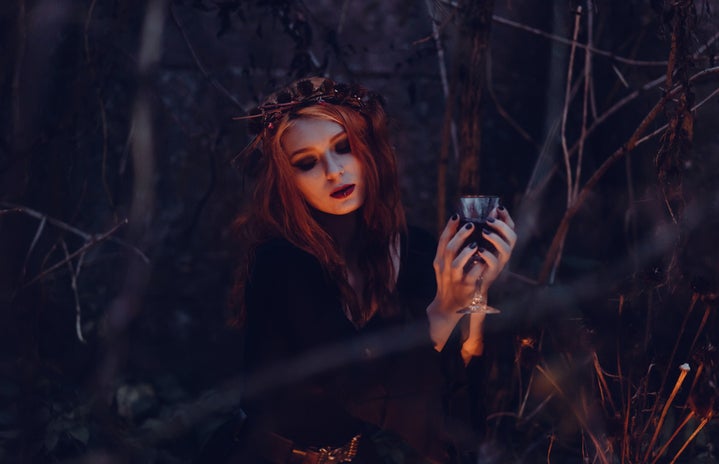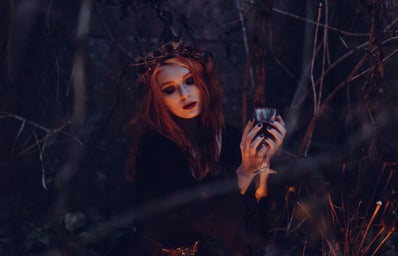It’s a picture we’ve all seen before: the end of a horror movie, the monster vanquished, law enforcement on the way, and the central climax resolved. We take comfort in the resolution: the punishment of the bad guy and the triumph of humanity over evil. One other important player in this scene is her–you know, the survivor. The one who relied on her wits, sensitivity, and, often, empathy to live until the end of the movie. She’s likable and well spoken, pretty but not stunningly gorgeous, and at this point is probably covered in blood and gore, limping from some injury or another and carrying a makeshift weapon, like a pipe or crowbar. She’s who’s left to pick up the pieces, she fills in law enforcement, mourns her lost cohorts, and lives on to tell her cautionary tale. To a lot of people, she is a symbol of female strength and empowerment. She’s a badass woman who relies on her intellect to live, oftentimes the only person who does live. This is absolutely something to look up to, and in fact I definitely do look up to many of these girls still to this day.
The issue with her arises when we look at just how present she is. Because the “Final Girl” really is everywhere. We watch her go to hell and back over and over again. From an empowerment standpoint, we find enjoyment in seeing her overcome struggles and use her humanity to become victorious. But on a more realist view, coming from a perspective that knows how Hollywood especially has long been dominated by the misogynistic writer/director/producer that really has no interest in empowering women, it leads me to wonder if on some level, society enjoys seeing women struggle, and what that can mean in a real-world context. In this article, I’d like to explore both sides of the argument, and leave the reader to form their own opinion on the Final Girl and her role in modern culture.
Just to get a nice firm grasp on the character I’m referring to, I’d like to provide some classic examples of Final Girls in the media. One of the first to come to mind is Jamie Lee Curtis’ character in the “Halloween” franchise. Over and over again, she outwits the bad guy, surviving again and again through horrific circumstances then coming out on the other side. She is the blueprint, the prime example for Final Girls everywhere. Other classic Final Girl movie characters include Tess from “Barbarian”, Nancy Thompson in “Nightmare on Elm Street”, and Kristen McKay in “The Strangers”. Final Girls are also present in horror novels as well. Rosemary Woodhouse in “Rosemary’s Baby”, Alex Stern in “Ninth House”, and Denorah from “The Only Good Indians”, while existing in different subject umbrellas and horror styles, all serve as Final Girls in the more literary sense. Mrs. Torrence and Carrie from “Carrie” and “The Shining” both carry the Final Girl from literature to film and back again.

Now that we’re on the same page, let’s talk about how the Final Girl can serve as an empowering figure. In horror movies, what the writer draws fear from is often based on real-life occurrences that we find scary, oftentimes watered down or amped up to a level that can be nearly impossible to recognize. Still, the classic motifs of kidnappings, domestic violence, and homicide are still central to the stories. And since violence against women is how we most often see these things come forward in real life, having a female protagonist is almost a given, providing viewers in the real world a sort of sense of comfort and familiarity on a deeper level. It’s also comforting to see an everyday woman overcome these challenges based purely on her own wit and cunning. We all breathe a sigh of relief along with the Final Girl when she finally defeats her opponent. Of course, it’s empowering to see how a “normal girl” relied only on herself to escape very real, very terrifying circumstances. The Final Girl becomes the most powerful character when she emerges victorious. Watching that sense of power is intoxicating, especially for those who may be looking for the same thing. An amazing example of a Final Girl coming into and learning to use her power at the end of the movie is Dani from “Midsommar”. We watch the entire movie, infuriated by how our protagonists are being abused by the cult, but even more infuriated by the manipulation and abuse that Dani is subjected to by her boyfriend. Not to spoil anything, but her total and absolute position of power over him by the end of the film is, although maybe not morally spotless, extremely gratifying to the audience. Dani becomes a symbol of power and resilience that promotes her to icon status, at least in my eyes.
However, our girl also has her dark side. While we do find strength and empowerment in the Final Girl’s ending victory, what about the in-between scenes, where she is chased by the killer or held captive by the crazy person? Or when she is struck and left bleeding by someone she thought she could trust? When we look at those scenes, the Final Girl is less than inspiring. She’s an all too real representation of how society treats women who are subjected to abuse. She often isn’t believed, or told to calm down, or accused of exaggerating the problem. Think of the scene where she escapes, only to be thrown back into the situation because her male counterpart “wanted to see for himself” (I’m specifically thinking of “Barbarian” here, but it’s a pretty common occurrence elsewhere). Seem familiar? In real life, these scenes sound more like “Are you sure you didn’t consent?” or “You should have been paying better attention” or the dreaded “He would never do that, he’s my friend”.
Why do we enjoy watching this, especially since it reflects real-life horrors so frequently? It goes back to that familiarity aspect. We watch women struggle because that’s what we’re used to. We let our Final Girl be traumatized because it’s expected, familiar. Many people aren’t as appalled by what’s happening because it’s so ingrained in our society that women are the ones who are built to endure suffering. I think that on some level, too, the patriarchal lens in which we all view modern media (just thanks to the extremely patriarchal society we still exist in) tends to taint what we consider as strong, powerful, and even attractive. Why should a woman have to experience severe trauma and near death experiences in order to be perceived as an icon? The villains in these movies (which the Final Girl often absolutely kicks to the curb) are still oftentimes more memorable than our main girl. Why is it that a psychopath like Hannibal Lecter is more memorable than Clarice, when Clarice is the one actively asserting her independence and power throughout the whole movie? The Final Girl goes through hell, usually learning valuable lessons about herself and the world around her along the way. However, this abuse and character degradation (and subsequent development) is so familiar to us that we gloss over it, accepting it as a given that she is strong and witty enough to survive, instead of acknowledging the depth of the experiences she’s been through.
Even though she’s part of a tale as old as time, we’re only recently recognizing the Final Girl for who she is: a strong, independent woman who uses her own strengths to live through the impossible. However, with that recognition comes the debate on whether she is doing more harm than good for the image of women in the media, especially for young people who may be drawing conclusions about how the world works. So, I leave you with this question: what do you think of the Final Girl? Next time you watch your favorite scary film, notice how the Final Girl’s journey makes you feel. Are you proud of her? Disgusted by the way she’s treated, or empowered by the choices she makes? I don’t think there’s a right or wrong answer. Although she always has the same story, the Final Girl is anything but straightforward and simple.


